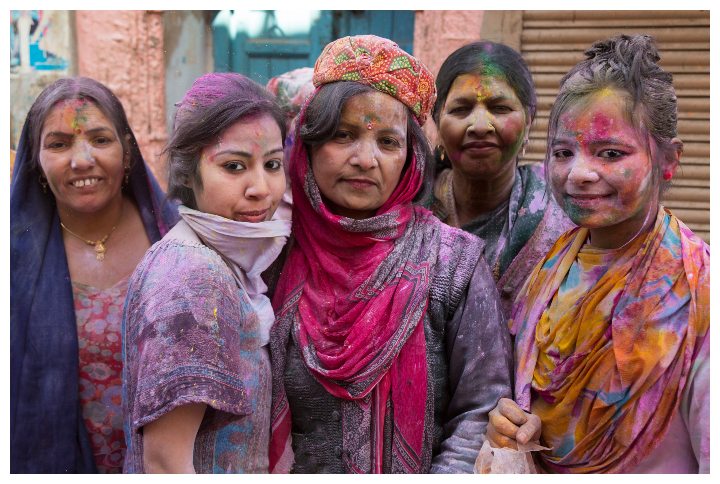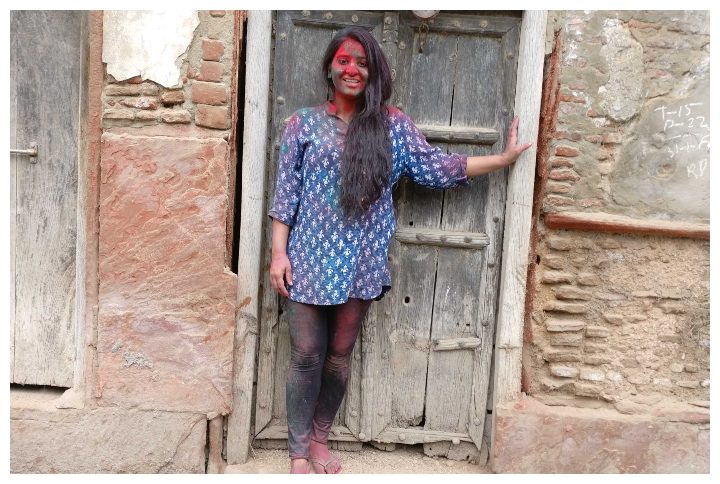
Writing this blog, to be honest was conflicting for me. What started as a travel blog on celebrating Holi in Vrindavan, turned into a blog on Holi and its skewed relation to consent. And that I feel is because as a solo woman traveller, it’s difficult to narrate the happy, fun parts of travel, without mentioning the real, gritty side of it. And my experience of celebrating Holi in the birthplace of Lord Krishna is a prime example of how travelling alone as a woman sometimes, unfortunately, has its downsides.
Why Holi’s Special In Vrindavan
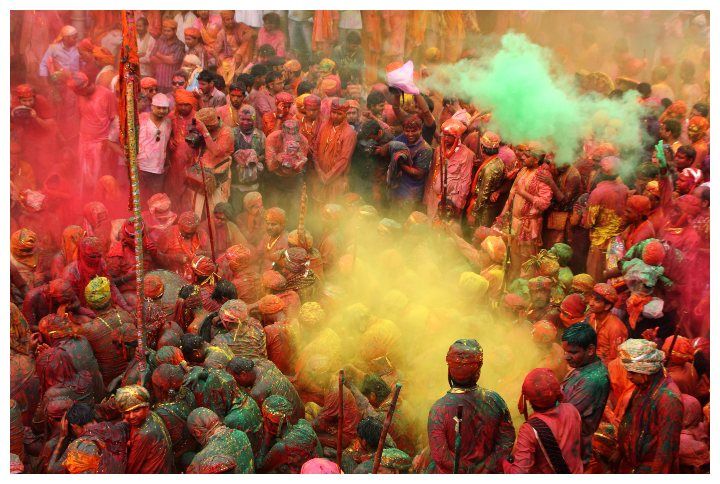
Holi has traditionally been celebrated in most parts of India. But in the region of Braj, that is Mathura, Vrindavan and the neighbouring villages of Barsana and Nandgaon, the celebrations are of epic proportions. The thousand-year-old unique customs and rituals attract tourists and pilgrims from all over.
Legend has it that Lord Krishna would go from his village (Nandgaon) to Radha‘s village (Barsana) and colour her and the gopis. The girls would then playfully beat him with sticks, and here’s how the Lathmar Holi tradition began. Reading up on this tale, and having heard about the celebrations, I became really keen to witness it firsthand. And that’s how I ended up booking my tickets to Mathura.
Day 1: Lathmar Holi In Nandgaon
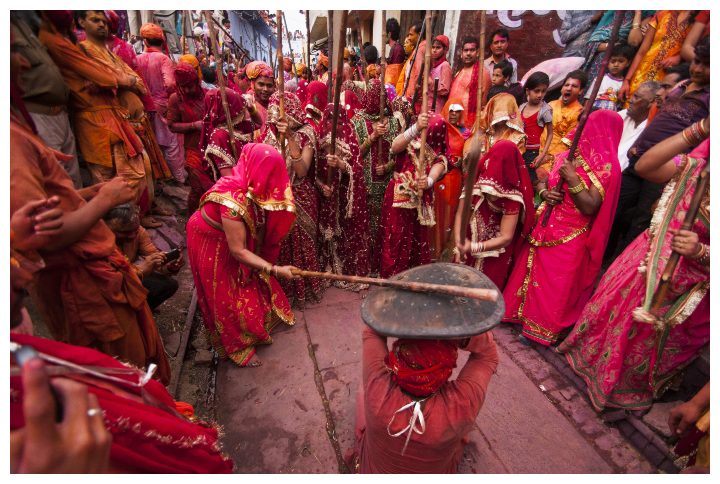
On my way to Mathura, I read a blog that had been posted by a girl who had been at the celebrations in Barsana the previous day. She wrote about how she had lacerations on her thighs as she had been the target of pichkaris filled with water mixed with glass particles. Horrified by her story, I quickly reached out to other travellers on Couchsurfing, who were planning to go to Barsana. There is safety in numbers after all. Reaching Mathura, I took an auto and then a cycle rickshaw to my ashram, Shree Krishna Prem Sanstha, near the ISCKON temple. Finding accommodation at the last minute given the volume of people who had turned up for the festivities was a difficult experience in itself. Leaving my bags in my room, I changed into a loose dark-coloured kurta, and headed to meet my fellow travellers. Mind you, I was ready to bolt in case I didn’t feel safe with them. Luckily for me, they turned out to be really nice people, and in hindsight, my saviours.
We reached Nandgaon and slowly made our way to the centre of activity. Slowly, because we kept getting buckets of water and ballons thrown at us by the villagers gathered there. A few times, random men stopped me to put colour on me. My requests to not do so were in vain. While I love playing Holi, I didn’t really like strangers touching me. Our group consisted of two guys and two girls, and while the strangers wanted to ‘play Holi’ with the girls, the guys were untouched. Things reached a peak when men on rooftops attacked us with pichkaris—on our butts and breasts. Stopping a guy on the street, I asked him why he was doing that and I was told—”You’re here on Holi. What do you expect? Bura na mano, Holi hai!”
No Land For Women
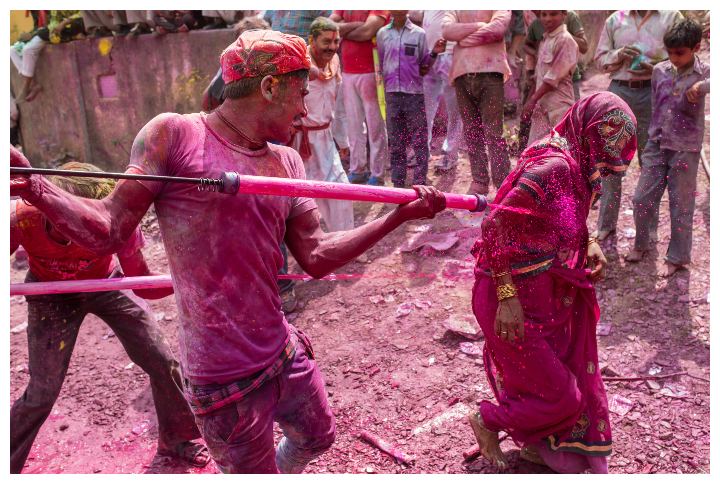
We made our way to the massive Shree Nandbaba temple, where festivities were in full swing. While standing by a wall, with the guys in front to protect us, I was suddenly grabbed from behind, held in place by two arms, while someone rubbed colour all over my face and neck. Instinctively, I pulled the arms off me, turned around and slapped the person. It was a drunk dude, with two other guys. The guys reached out to hurt me but were thankfully stopped by my new friends. I generally would never get into a physical skirmish with men, as my self-preservation instinct would never allow me. But at that moment, being gripped by strangers was scary AF and I wasn’t really thinking.
To protect myself from further harassment, I found safety on the roof of the temple amongst scores of photographers and incidentally, a group of women, all there to avoid the same situation. The view from the top was triggering in itself. Women, young or old, alone or in groups, were the targets of men, who surrounded them, alienated them from their friends, drenched them in colours and water, ‘teasing’ like how they thought Krishna teased Radha. What was even more bizarre was how this behaviour was not just tolerated, but accepted in the name of tradition. Even the few policemen around didn’t do anything to stop this!
We left the place soon after and headed back to our ashram. Washing off the colour along with the day’s events, I decided to stay on even though I felt like giving up and heading back to Mumbai.
Day 2: Vrindavan Parikrama
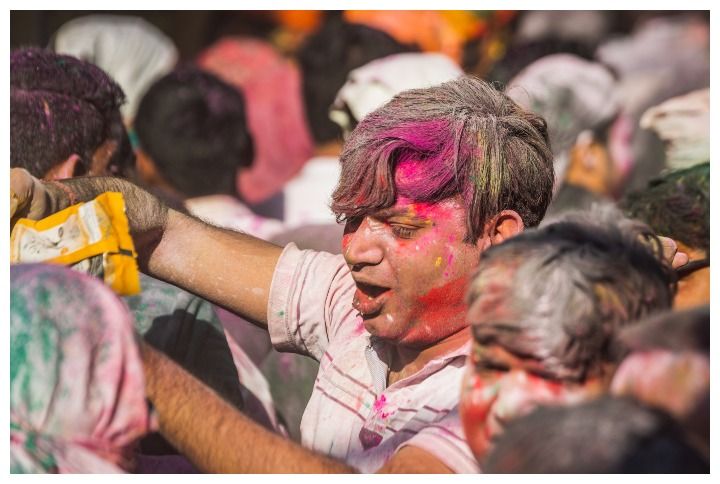
The next day, along with the travellers I’d met, I went on a ten-kilometre walk around the circumference of Vrindavan. It was astounding to see the crowd that had collected to do this religious walk. Along the way, we saw transgenders performing dances, people selling all sorts of knick-knacks, stalls of food and drinks, etc. The whole thing had the vibe of a village fair. The only untoward incident happened when a group of men threw white, powdery gulaal in our eyes, and surrounded us and separated us from each other. I was honestly scared to death, as I couldn’t see. Flailing around to find someone I know, I grabbed hold of a shirt. Squinting through my eyes I realised it was a random guy and my friends were nowhere close. Luckily, a policeman ran straight towards us and chased the miscreants away with his stick.
Day 3: Widow’s Holi
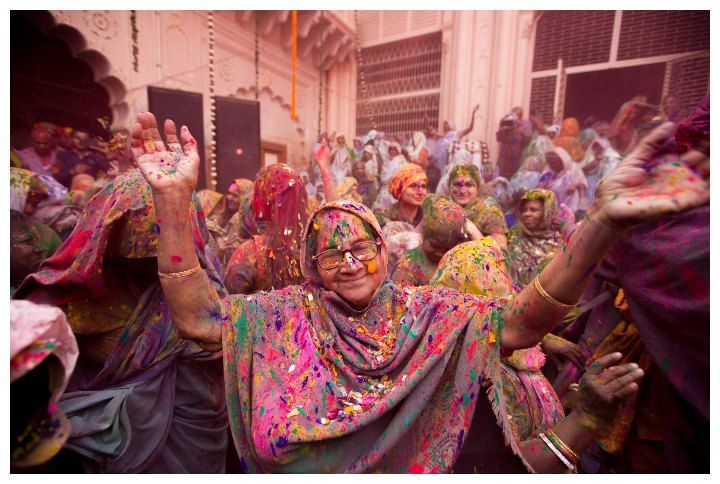
Over the last few decades, thousands of widows have made Vrindavan their home. Ostracised by society, shunned by family, and considered inauspicious at weddings or celebrations, they turned to ashrams in the city. In 2016, the widows broke tradition and played Holi for the first time. Since then, a Holi celebration is organised by Sulabh International each year.
On the third day, after exchanging goodbyes with my fellow travellers, I headed to the Gopinath Temple to experience the Widow’s Holi. To be honest, celebrating with the widows was the only time I felt at ease during my stay in Vrindavan. And to see their happy smiles and experience the festive vibe was simply amazing!
How You Can Be Safe
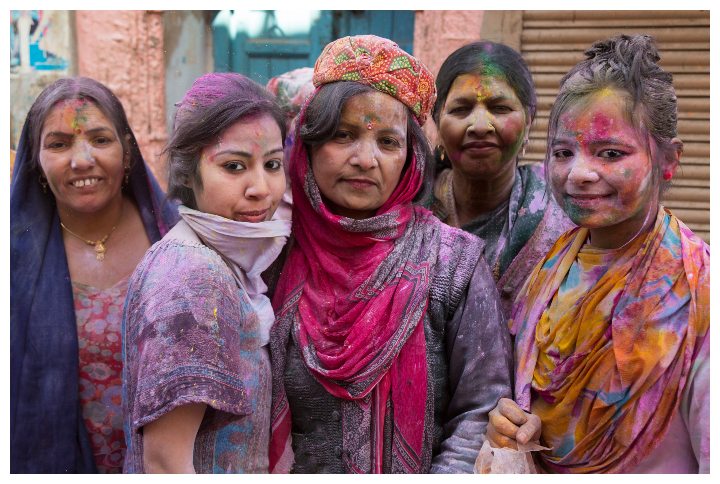
I have travelled to different parts of India, and a few parts of the world. Yet there is not a single place I felt as unsafe as I did in Vrindavan. To any woman planning to travel there alone, I have just one piece of advice—group up. Take along friends, join other travellers or stick to other women in crowds, but avoid going alone if possible.
In the garb of age-old tradition, where Krishna teased Radha and consequently had many praises and songs written about him, it’s become a very natural part of the festive mentality to grab, grope and molest women. India’s relationship to consent is skewed anyway. As a woman traveller, I don’t need bullet trains or hot-air balloons in my country. What I need is to feel safe. But as things stand now, this part of India is no land for women.
Interested in this topic? We often have such conversations on Malini’s Girl Tribe. To be a part of them, join the group here.

